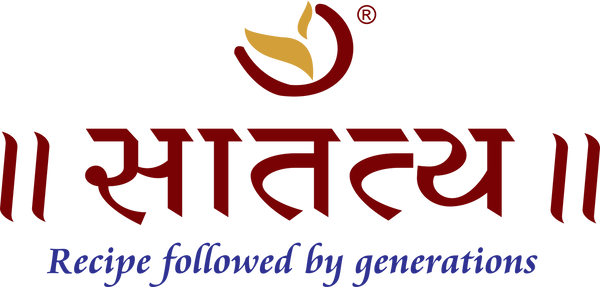
Doshas in Ayurveda: Vata, Pitta, and Kapha – A Guide to Balancing Your Mind and Body
Introduction
Ayurveda, the ancient Indian system of holistic healing, is built on the concept of the three doshas: Vata, Pitta, and Kapha. These biological energies govern various physiological and psychological functions in the body. Understanding your dosha type can help you maintain optimal health, balance, and well-being.
In this blog, we’ll explore each dosha in detail, their characteristics, and how to balance them for a harmonious life.
What Are the Three Doshas in Ayurveda?
The three doshas—Vata, Pitta, and Kapha—are derived from the five elements (earth, water, fire, air, and ether). According to Ayurveda each person has a unique prakriti (natural constitution) based on the dominance of these doshas.
Ayurvedic Sloka on Doshas
According to ancient Ayurvedic texts, the foundational principles of doshas are described as follows:
"वाटः पित्त-कफाः देहे, सर्वं धारयन्ती हि |
बालाबल-विपर्यासत्, तत्र रोगः प्रजायते ||"
(Source: Sushruta Samhita)
Meaning: The three doshas—Vata, Pitta, and Kapha—maintain the body’s balance. Any imbalance in these leads to disease.
1. Vata Dosha – The Energy of Movement
Elements: Air and Ether
Qualities: Dry, light, cold, irregular, mobile
Vata governs movement in the body, including circulation, respiration, and nerve impulses. People with a dominant Vata dosha are typically creative, energetic, and quick thinkers, but they may also experience anxiety, dryness, and digestive issues when out of balance.
Signs of Vata Imbalance:
Ø Dry skin and hair
Ø Insomnia or restless sleep
Ø Digestive problems like bloating and constipation
Ø Feeling anxious or overwhelmed
Ø Joint pain and stiffness
How to Balance Vata:
Ø Diet: Eat warm, moist, and grounding foods like soups, cooked grains, and dairy products.
Ø Lifestyle: Establish a regular routine, practice meditation, and avoid excessive travel or overworking.
Ø Herbs: Use ashwagandha, ginger, and sesame oil for internal and external nourishment.
Ayurvedic Sloka on Vata
"रुक्षो लघुः शीतो खरः सूक्ष्मो चलो’निलाः|
वातः प्राकृतृत्युक्तः, शारिरे तस्य वर्धनं ||"
(Source: Ashtanga Hridayam)
Meaning: Vata is characterized by dryness, lightness, coldness, roughness, subtleness, and mobility. When it increases in the body, it leads to imbalances.
2. Pitta Dosha – The Energy of Transformation
Elements: Fire and Water
Qualities: Hot, sharp, oily, intense, and light
Pitta governs digestion, metabolism, and intellect. Pitta-dominant individuals tend to be sharp-minded, ambitious, and passionate, but when imbalanced, they can suffer from anger, inflammation, and digestive disorders.
Signs of Pitta Imbalance:
Ø Acid reflux or indigestion
Ø Skin issues like acne and rashes
Ø Irritability and short temper
Ø Excessive sweating
Ø Sensitivity to heat
How to Balance Pitta:
Ø Diet: Consume cooling, hydrating foods like fresh fruits, vegetables, coconut water, and dairy.
Ø Lifestyle: Avoid excessive heat, intense workouts, and competitive situations; practice yoga and meditation.
Ø Herbs: Use aloe vera, neem, and coriander to soothe Pitta imbalances.
Ayurvedic Sloka on Pitta
"उष्णो तिक्ष्नो लघु भस्मो द्रवः सस्नेहो दहनात्मकः |
पित्तः प्रकृतृत्युक्तः, शारिरे तस्य वर्धनं ||"
(Source: Ashtanga Hridayam)
Meaning: Pitta is characterized by heat, sharpness, lightness, and fluidity. Excess of Pitta in the body can cause various imbalances.
3. Kapha Dosha – The Energy of Stability
Elements: Earth and Water
Qualities: Heavy, slow, moist, cool, and stable
Kapha is responsible for structure, immunity, and lubrication in the body. People with a dominant Kapha dosha are usually calm, compassionate, and strong, but an imbalance can lead to weight gain, sluggishness, and respiratory issues.
Signs of Kapha Imbalance:
Ø Weight gain and slow metabolism
Ø Feeling lethargic and unmotivated
Ø Excess mucus and congestion
Ø Depression or emotional heaviness
Ø Water retention and bloating
How to Balance Kapha:
Ø Diet: Favor light, warm, and spicy foods like soups, legumes, and bitter greens.
Ø Lifestyle: Engage in regular exercise, social activities, and dynamic routines to prevent stagnation.
Ø Herbs: Incorporate turmeric, ginger, and cinnamon to enhance metabolism and reduce excess Kapha.
Ayurvedic Sloka on Kapha
"श्लेष्मा गुरुः शीतो मण्डः स्निग्धाः श्लक्षणः मृदुर्नवनः
| कफः प्रकृतिर्य्युक्तः, शारिरे तस्य वर्धनं ||"
(Source: Ashtanga Hridayam)
Meaning: Kapha is heavy, cold, slow, smooth, and moist. When Kapha increases, it leads to stagnation and related imbalances.
Identifying Your Dominant Dosha:
Not sure about your dosha type? Consider these common characteristics:
Ø Vata-dominant: Thin body frame, dry skin, active mind, irregular appetite
Ø Pitta-dominant: Medium build, warm body temperature, intense focus, prone to acidity
Ø Kapha-dominant: Solid body structure, soft skin, steady energy, slow digestion
For a precise analysis, consult an Ayurvedic practitioner who can help determine your prakriti and guide you toward the best lifestyle and dietary choices.
Conclusion:
Understanding and balancing your Vata, Pitta, and Kapha doshas is key to maintaining overall health and well-being. By adopting Ayurvedic principles in your diet, lifestyle, and daily routine, you can achieve harmony within your body and mind.
Start your Ayurvedic journey today and experience the benefits of a balanced life!

